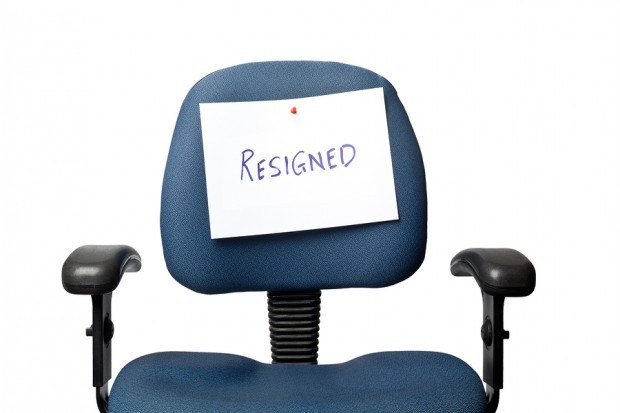During a session of an insurance industry webinar titled “State of the Insurance Marketplace,” the war for talent was discussed just as much as the hard or moderating property/casualty insurance market.
And executives of carriers and brokers confirmed that requiring employees to work in the office not only means few responses to advertisements for open positions but also has some current workers heading for the exits.
“We’re basically seeing 0 percent unemployment rate in the insurance industry,” said Patrick M. Gallagher, the chief executive officer of Gallagher Global Brokerage for the Americas at Arthur J. Gallagher & Co., responding to a question from Mark Walls, vice president of Communications and Strategic Analysis at Safety National about the war for talent during the workers compensation insurer’s Out Front Ideas virtual conference. “If I put ‘it’s 100 percent in the office’ or ‘it’s going to be modified agile,'” in a job description, “I’m getting basically zero applications,” Gallagher said, speaking about the broker’s hiring efforts. “Everybody wants to see that we’re going to be an agile workplace of the future.”
Gallagher went on to describe other indications of an escalating talent war. “We see it in our carrier partners. We see more change at the underwriter desk—certain skills being certainly lost from some underwriting communities and less opportunity to convert some of the very commercially focused, sales-focused underwriters into being brokers,” he said, noting that past underwriter-to-broker converts offered “a nice pipeline” for Gallagher to get “good, well-trained talent that know how the watch works.”
Safety National Chair and CEO Mark Wilhelm was the first to respond to Walls, who asked how economic conditions are impacting the ability to retain and attract talent in the insurance industry. Wilhelm said that while carriers had long anticipated a talent shortage given the much-discussed retirements of aging baby boomers over the years, COVID has accelerated retirements after some older workers got used to working from home, and others started to view the workplace as a dangerous place for people in their age group.
Beyond that, “people across all ages and disciplines are questioning where they are in their careers, are they in the right industry, what their priorities are…They want to do work that has purpose,” Wilhelm said, noting that the insurance industry hasn’t done a good job in promoting itself in that regard or touting the job security that exists even during an uncertain economy.
“Through the pandemic, we continued hiring and never stopped…That’s because we’re an essential industry. It has purpose. We are providing that protection to employers that they need no matter what the economic or social circumstances are,” he stressed.
After a long period of working from home with the help of technology, some employees’ attitudes about what work should look like going forward have changed. “Safety [National] is very much a company that values its culture—and part of our culture is collaborating and teamwork,” said Wilhelm, adding, “That’s just not as good in a work-from-home environment.”
 “We’ve had a couple of departures as the result of people saying, ‘I don’t want to come back [to the office],'” he revealed.
“We’ve had a couple of departures as the result of people saying, ‘I don’t want to come back [to the office],'” he revealed.
Beyond that, an inflationary economy is pushing some people to seek new positions in the industry. “With the price of everything going up, you’ve got people wondering, ‘Could I do better somewhere else?'” In addition, he said, “people that move the dial are being particularly targeted,” referring to the best employees that carriers and brokers want to retain. “I know my colleagues probably have stories about how they’ve had to pay up to keep some of their great people,” he said.
Gallagher said his firm is staying alive in the talent war by building from within. “It’s made us focus on building our own,” he said, reporting that in the past Gallagher would fill positions in its high-end support ranks by hiring two-thirds from industry-proven talent and building the other third on its own. “We’ve had to absolutely flip that on its head. We’re looking at new ways to do training and development. A lot of the things that we used to do to build our own producer ranks, now we’re bringing into the support function ranks,” he said, referring to an internship program and Gallagher’s Achieve program, which involves “bringing people in fresh out of school and teaching them the bare skills that they need to be good in our business.”
“That’s a longer delay, but it certainly looks like there’s going to be a shortage of talent for a number of years.”
Gallagher said that, like Safety, the broker has been hiring throughout most of the pandemic. “But we did take a pause in March through July [2020], and that pause has also set us back,” he admitted. “Then you tack on the fact that 45 percent of our real top talent are 55 and above, [along with] the difficult marketplace that they’re in—it’s not an easy marketplace to be handling a big book of business…And we are in a war for talent,” he said.
“I think we’re going to win it,” he said, agreeing with Wilhelm that the industry has to message out its benefits and career opportunities. “We’re going to have to keep pushing that message to colleges, universities, junior colleges—because the talent requirements of a growing insurance agency and brokerage just don’t seem to be relenting anytime in the next couple of months or years.”
While Gallagher eluded to the fact that an agile work environment is culturally tough for a broker, John Glomb, CEO of Philadelphia Insurance Company, observed that virtual interactions have encouraged creativity. “That has really been a nice shot in the arm during a difficult time generally,” he said, after echoing the comments of Wilhelm and Gallagher highlighting how resilient the insurance industry has been over the last 18 months, and the need to advertise its job stability.
Glomb, who was asked a different question by Walls—about retaining small business customers post-pandemic—responded with ideas about having a customer-centric focus. He talked about getting into customers’ minds, making applications easier for customers and agents to complete by using outside data sources, and also understanding the economic pressures customers face by offering flexible payment plans. “That doesn’t mean that we don’t want to be paid our premium when we’re on risk, but being able to stretch out the billing plan over the policy period and showing that empathy will go a long way to not only making those accounts stickier, in a tough time, but also stick here once the economy returns and everything’s back and booming.”
The carrier executive has a similar approach to talent retention and acquisition challenges. “We can’t turn a blind eye to the war on talent. There’s no doubt that it’s heating up…If we, as an industry, are going to get it right and win the war—which I believe we will—we have to have similar open mind to keeping our finger on the pulse of our employees and where their heads are, and being nimble and agile in working environment post-pandemic.”
Like Gallagher, he said Philadelphia Insurance starts “at the ground level,” with a robust training program, a summer associate program and a new hire program that’s been around for over a decade. “But the amount of focus on both the full-time trainees and the summers is something that has taken on new meaning during the last 18 months,” he agreed.
Later in the session, when panelists turned to the subjects of insurance market conditions and emerging risks, Gallagher again discussed employers’ near-term challenges in building flexibility into return-to-office schedules. This time focusing on businesses covered by insurance industry employment practices liability policies, Gallagher suggested that struggles of creating agile workforces will mean more EPL claims ahead.
Let’s say “I let Steve work from home, but I make Mike come into the office. Where will that lead us?” he asked. “It’s just a really, really difficult next couple of months to decide what your agile workforce is going to look like, and who deserves to be at home and who doesn’t.”
“If the California plaintiffs lawyers that work on wage and hour [lawsuits] right now get their hands on that in more states than California, I think we can be in for a real treat on that,” he said, meaning that the industry should be prepared for more employment litigation.
(For more of the panelists comments about the market, read the related article, “Buckle Up for Interesting Times: Not a ‘Standard’ Hard Market“)





















 Is the AI Boom a Bubble Waiting to Pop? Here’s What History Says
Is the AI Boom a Bubble Waiting to Pop? Here’s What History Says  First Atlantic Hurricane Forecast for 2026 Suggests Season Close to 30-Year Norm
First Atlantic Hurricane Forecast for 2026 Suggests Season Close to 30-Year Norm  Why the Middle Market Matters and How Insurers Can Capture It
Why the Middle Market Matters and How Insurers Can Capture It  Nearly Half of 100 Largest P/C Insurers Destroy Value: ACORD
Nearly Half of 100 Largest P/C Insurers Destroy Value: ACORD 






